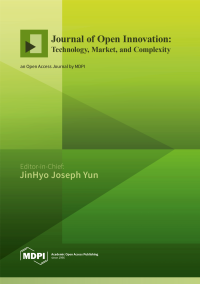This research aims to forecast future economic and environmental growth for the next 16 years (2020–2035) according to the government’s strategic framework by applying the second order autoregressive-structural equation model (second order autoregressive-SEM). The model is validated by various measures, fits with the
[...] Read more.
This research aims to forecast future economic and environmental growth for the next 16 years (2020–2035) according to the government’s strategic framework by applying the second order autoregressive-structural equation model (second order autoregressive-SEM). The model is validated by various measures, fits with the best model standards, meets all criteria of the goodness of fit, and is absent from any issues of heteroskedasticity, multicollinearity, autocorrelation, and non-normality. The proposed model is very distinct from other alternatives in that it produces the optimal outcome. Its mean absolute percentage error (MAPE) is 1.02% while the root mean square error (RMSE) is 1.51%. A comparison of the above results is carried out to compare the same values from other models, namely the regression linear model (ML model), back propagation neural network (BP model), artificial neural natural model (ANN model), gray model, and the autoregressive integrated moving average model (ARIMA model). The second order autoregressive-SEM is a model that is appropriate for long-term forecasting (2020–2035), and accounts for the specifics of the Thai government strategy set under the Industry 4.0 policy framework. The results of the long-term analysis indicate that the current political policy
will result in continuous economic growth, where the gross national product (GNP) growth rate will climb up to 6.45% per annum by 2035, while the environment is being negatively affected. The study predicts that CO
2 emissions will rise up to 97.52 Mt CO
2 Eq. (2035). The forecasting model also reflects that the economy factor has an adjustment ability to equilibrium stronger than that of the environment factor; further, it shows that the relationship between the factors is causal. In addition, the political policy
, economy
, and environment
factors are found to have both direct and indirect effects. As to the results, this study illustrates that the Industry 4.0 policy is still inefficient, as the carbon dioxide emissions are projected to be higher than the threshold for environment hazards and disasters which set to the limit of 80 Mt CO
2 Eq. by 2035. The effect of such policy will put the environment at risk, and the government must take immediate action to respond to this urgency. Thus, the second order autoregressive-SEM model remains a significant model embedded with the adjustment ability to equilibrium and the applicability for various contexts in different sectors. This introduced model is a vital tool for assisting the national government to create policy that is effective and sustainable, and lead to positive development of the nation. This second order autoregressive-SEM model can be used as a resource for the management of both public policy and private enterprise.
Full article



